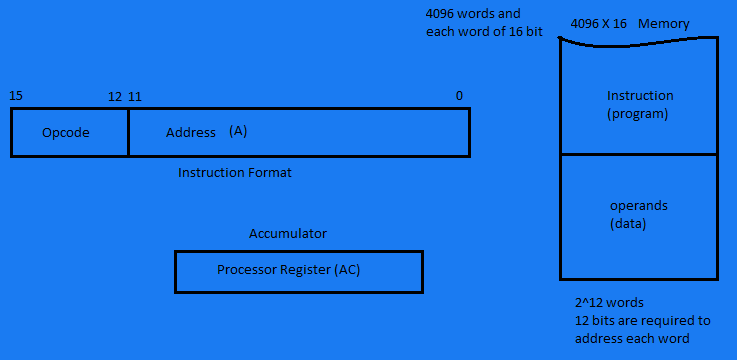The organization of the computer is defined by its internal registers, the timing and control structure and the set of instruction that it uses.The internal organization of a digital system is defined by the sequence of microoperations it performs on data stored in its registers
The user of a computer can control the process by means of a program. A program is set of instructions that specify the operations, operands and the sequence by which processing has to occur.
An Instruction code together with data are stored in memory
1. An instruction code is a group of bits that instruct the computer to perform a specific operation.
2. The most basic part of an instruction code is operation part.
3. The operation code of an instruction is a group of bits that define such operations as add, subtract, multiply, shift and complement.
4. The number of bits required for an operation code of an instruction depends on the total number of operations available in the computer.
for example, let say there are 64 operations available in the computer then, 6 bits are required to represent 2^6 distinct operations.
5. An operation is part of an instruction that is stored in computer memory. It is a binary code that tells computer to perform specific operation.
6. The operation code is decoded in control unit, it then issues a sequence of control signal to initiate microoperations in computer registers.
7. For every operation code, the control issues a sequence of microoperation needed for the hardware implementation of specified operation (macro operation)
An instruction code not only specify the operation but also specify the registers or the memory words where the operands are to be found as well as the registers or the memory words where the result is to be stored.
The memory address (A) tells the control where to find an operand in memory. This operand is read from the memory and used as the data to be operated on together with the data stored in accumulator(AC).
Immediate operand: When the second part of the instruction code specifies an operand, the instruction is said to be have an immediate operand
Direct Address: When the second part specifies the address of an operand, the instruction is said to have a direct address.
Indirect Address: When the bits in the second part of instructions designate an address of memory word in which the address of the operand is found, it is called indirect address.
